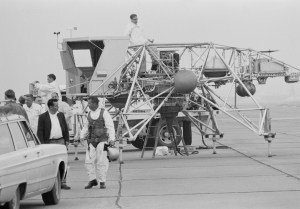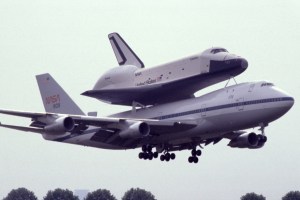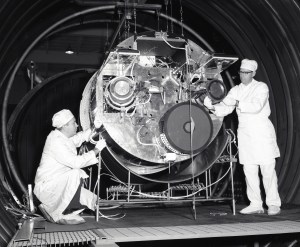In January 2004, President George W. Bush announced his Vision for Space Exploration. Among other goals, the Vision called for the retirement of the space shuttle after completion of the assembly of the International Space Station. In July 2011, the STS-135 mission with NASA astronauts Christopher J. Ferguson, Douglas G. Hurley, Sandra H. Magnus, and Rex J. Walheim aboard, completed that objective. During this final space shuttle mission, the last flight of the orbiter Atlantis, they delivered payloads and supplies to support the International Space Station for more than one year. The successful completion of the 12-day mission to the station brought an end to the 30-year space shuttle program.
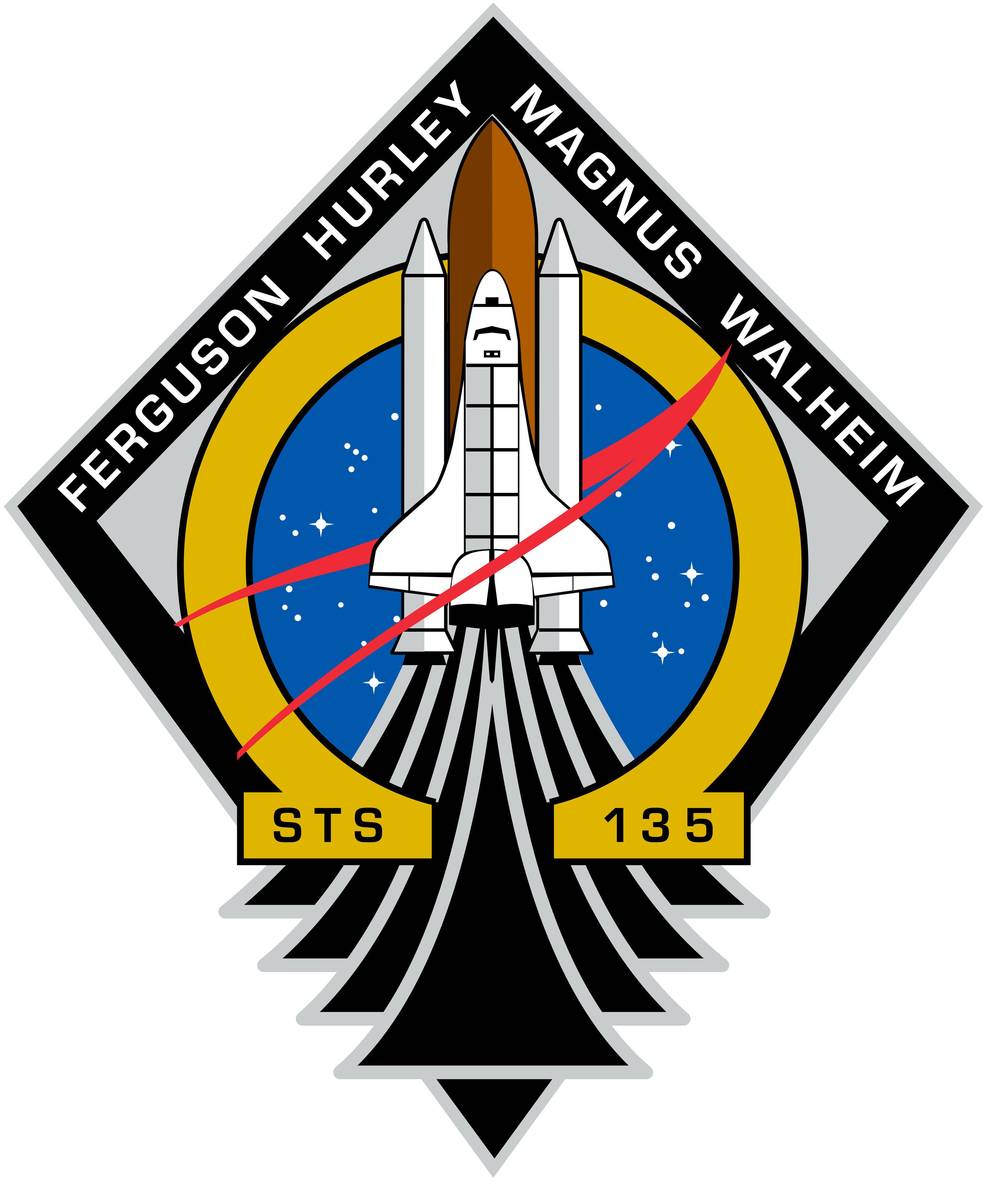
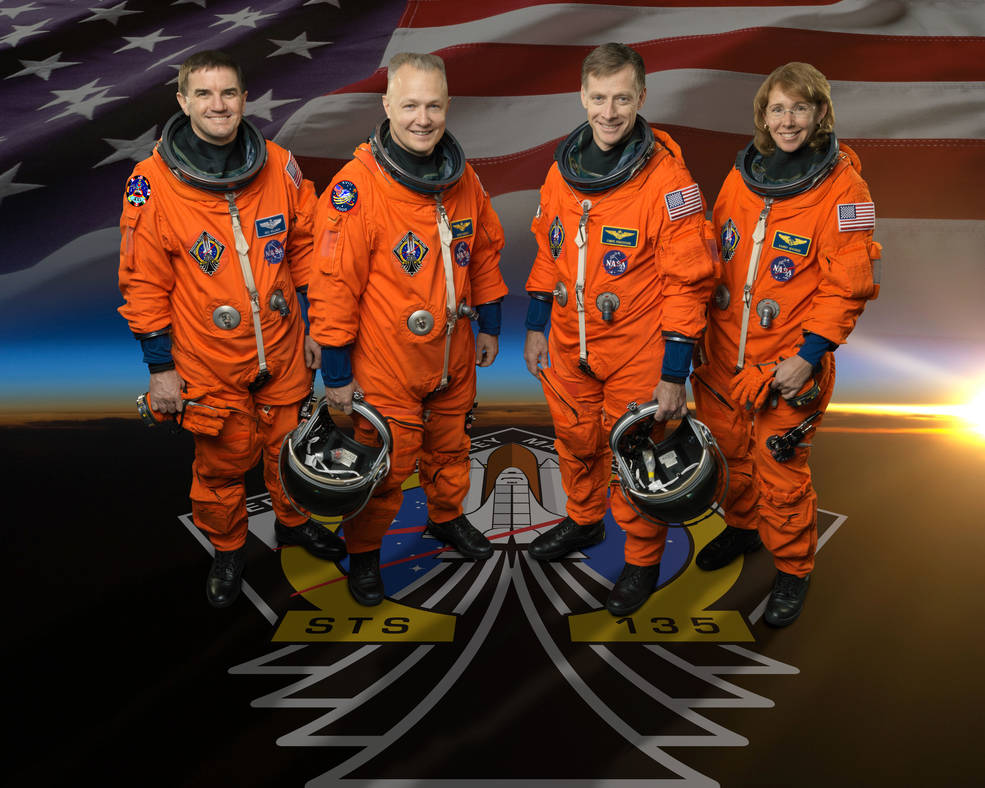
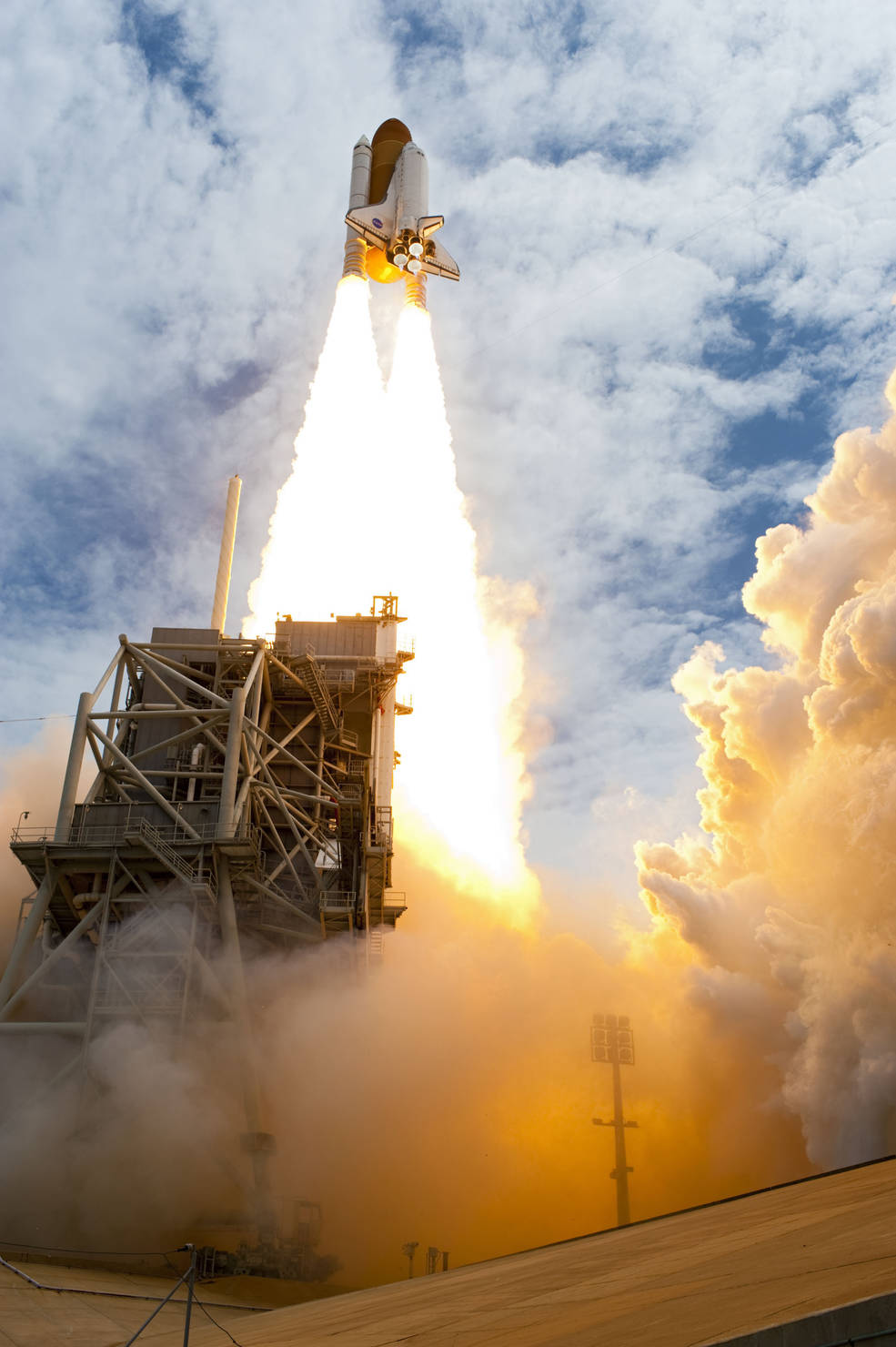
Left: The STS-135 crew patch. Middle: The STS-135 crew of NASA astronauts Rex J. Walheim, Douglas G. Hurley, Christopher J. Ferguson, and Sandra H. Magnus. Right: Launch of space shuttle Atlantis on the STS-135 mission from NASA’s Kennedy Space Center in Florida.
The final space shuttle mission, STS-135, the last flight of the orbiter Atlantis, lifted off from Launch Pad 39A at NASA’s Kennedy Space Center (KSC) in Florida on July 8, 2011. The main objectives for astronauts Ferguson, Hurley, Magnus, and Walheim included transferring supplies and spare parts to the space station and delivering a large experiment to demonstrate in-orbit refueling techniques. The Expedition 28 crew of NASA astronauts Ronald J. Garan and Michael E. Fossum, cosmonauts Andrei I. Borisenko, Aleksandr M. Samokutyayev and Sergei A. Volkov representing Roscosmos, and Satoshi Furukawa representing the Japan Aerospace Exploration Agency, awaited on board the orbiting laboratory to assist them. Less than two days after launch, Ferguson guided Atlantis to a smooth docking with the station at the Pressurized Mating Adapter-2, located on the forward end of the Harmony Node 2 module. After they opened the hatches between the two spacecraft, the 10 members of the two crews held a brief welcoming ceremony and the shuttle crew received the standard station safety briefing.
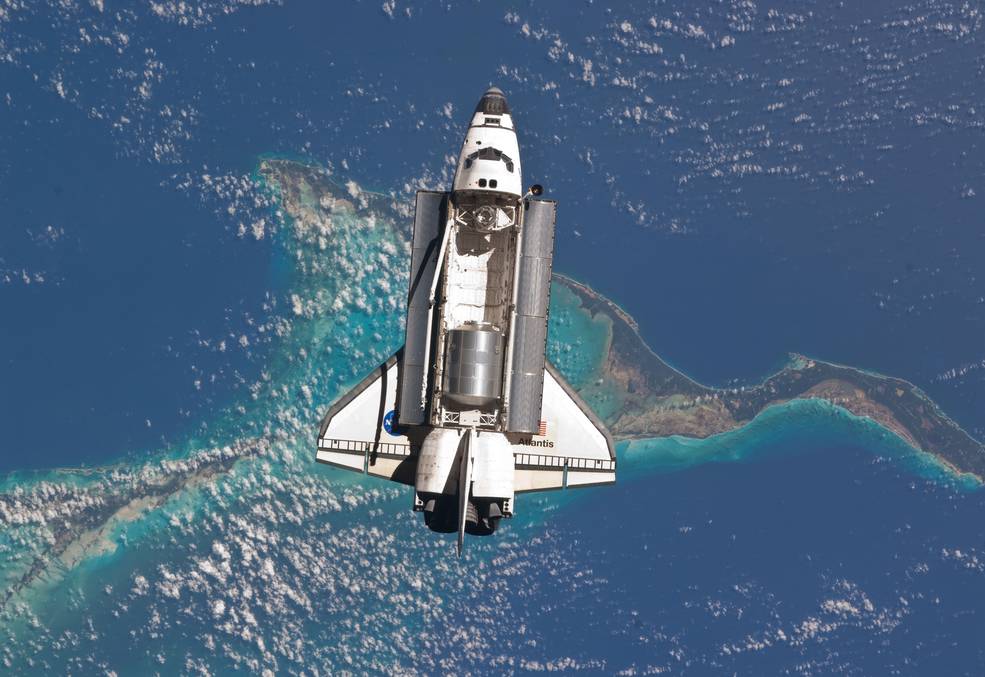
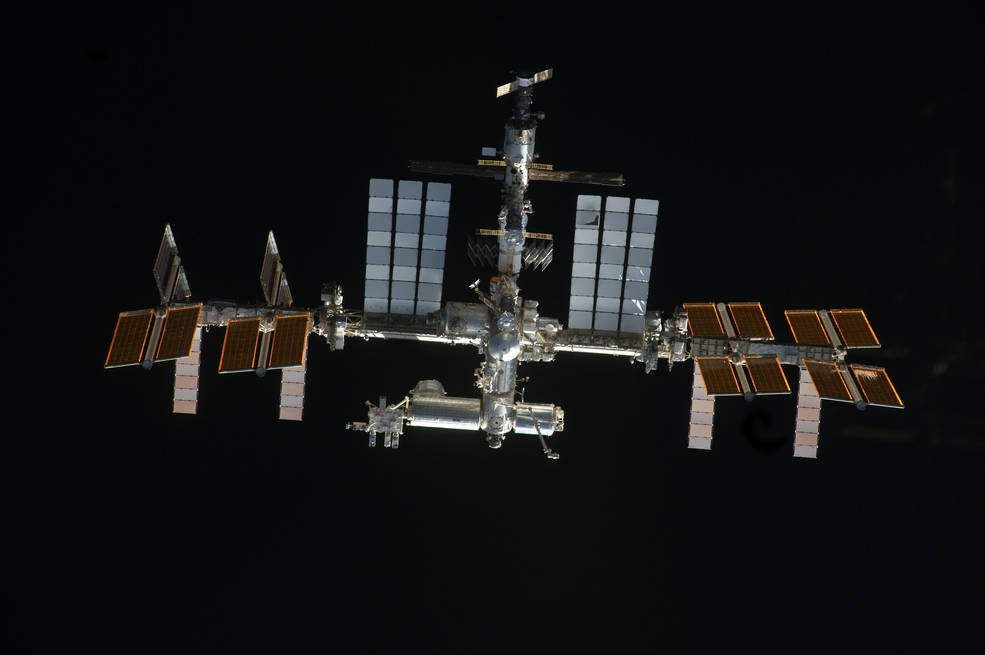
Left: View from inside the space station of Atlantis approaching with the Raffaello
Multi-Purpose Logistics Module in the payload bay. Right: View of the space station
as space shuttle Atlantis approaches for docking.
On the day after docking, Hurley and Magnus used the station’s Canadarm2 robotic arm to grapple the Raffaello Multi-Purpose Logistics Module (MPLM) in the shuttle’s cargo bay and relocate it to the Harmony module’s Earth-facing port. The crews began to transfer the more than 9,400 pounds of spare parts, equipment, food, and other supplies from Raffaello to the space station, in addition to the 2,200 pounds of cargo transferred from the shuttle’s middeck – enough supplies to last the crew more than one year. The Expedition 28 crew received a supply of fresh foods including much appreciated fruits and chocolates. The Mission Control Center in Houston informed the astronauts that onboard consumables allowed for an additional docked day, giving them more time to complete all the transfers.
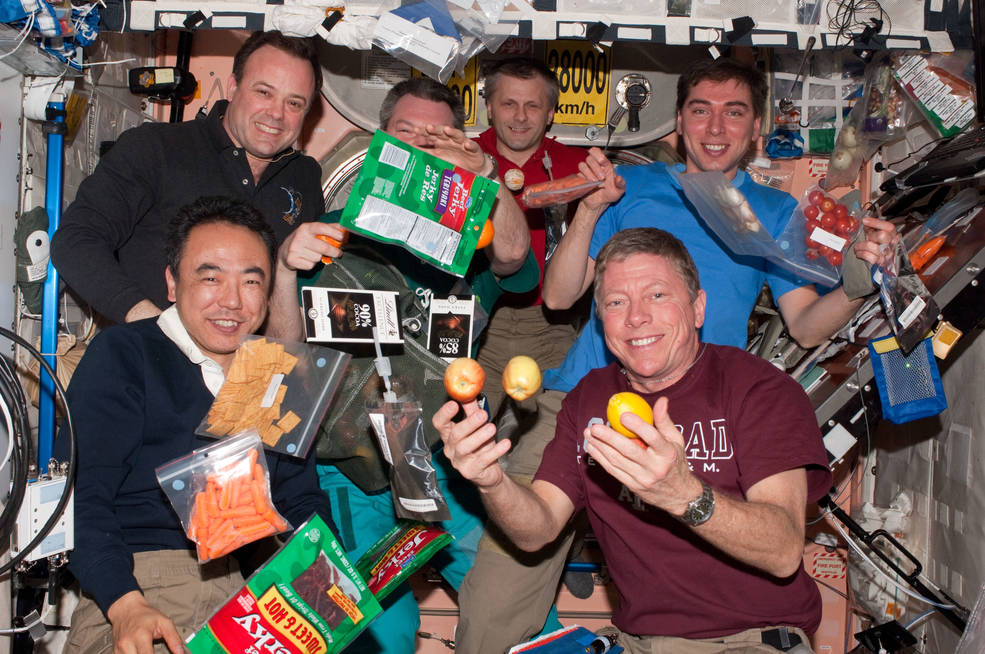
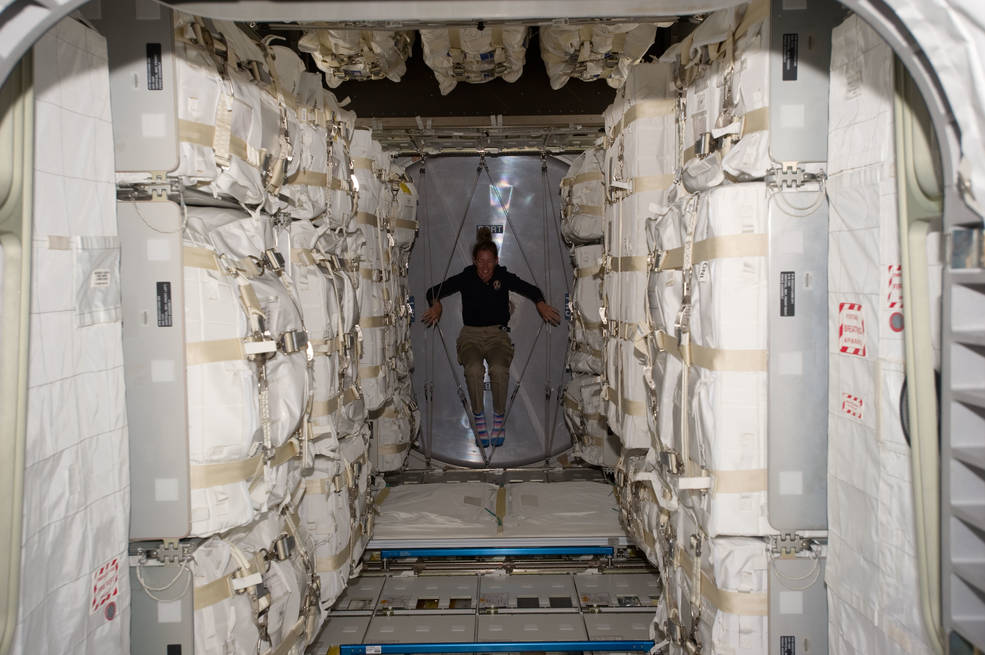
Left: The Expedition 28 crew enjoying the deliveries of fresh foods brought by STS-135.
Right: STS-135 astronaut Sandra H. Magnus in the Raffaello Multi-Purpose Logistics Module.
On the mission’s fifth day, Expedition 28 astronauts Fossum and Garan stepped out of the station’s Quest airlock for a 6-hour, 31-minute spacewalk. Their principal tasks included retrieval of a failed ammonia pump module from the station’s cooling system and transferring it to the shuttle’s cargo bay for return to Earth, transferring the Robotic Refueling Mission — an experiment developed by NASA’s Goddard Space Flight Center in Greenbelt, Maryland, to test in-space refueling techniques — to the station, and deploying the eighth Materials on International Space Station Experiment, a long-duration materials exposure payload delivered to the station during the STS-134 mission in May 2011.
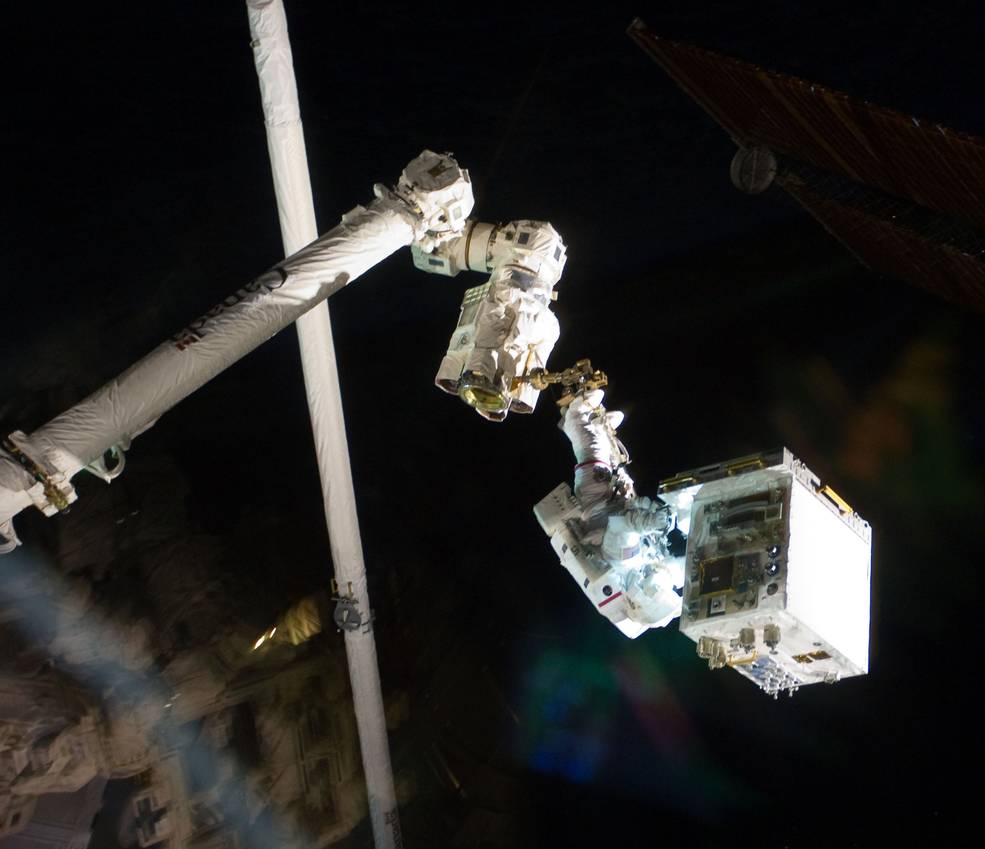
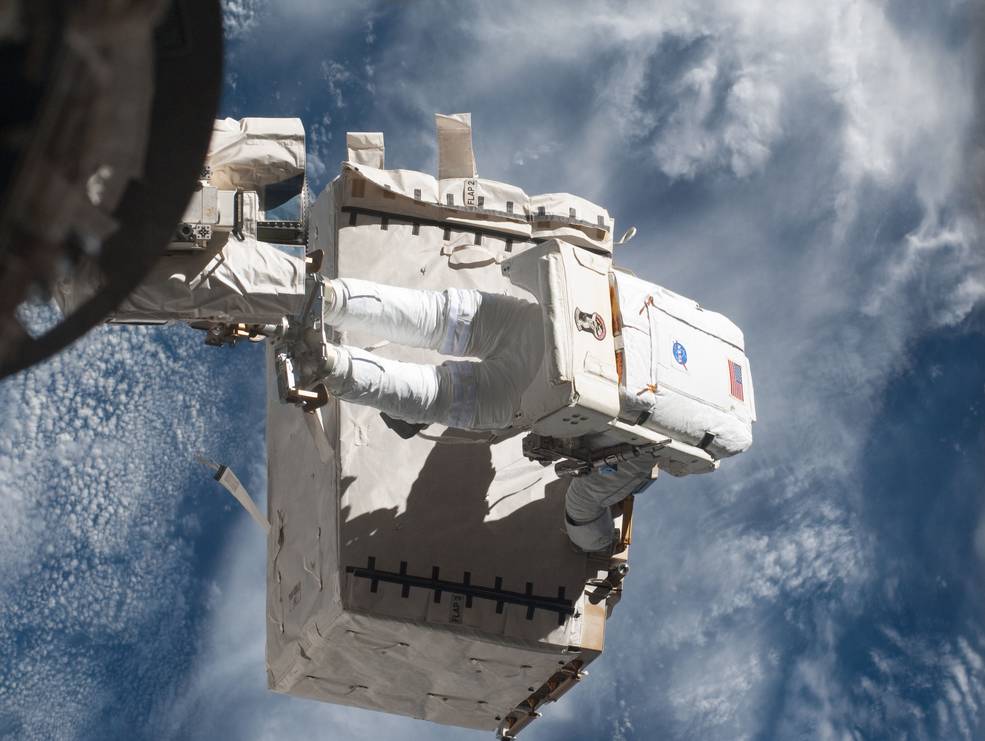
While Atlantis remained docked with the space station, Expedition 28 NASA astronauts
Michael E. Fossum and Ronald J. Garan performed a spacewalk. Left: At the end of the
station’s Canadarm2 robotic arm, Fossum transfers the Robotic Refueling Module
experiment to the space station. Right: Garan transferring the failed ammonia
pump module to the space shuttle’s cargo bay.
Over the next several days, the joint crews continued with transfer activities. On July 15, President Barack H. Obama radioed the combined shuttle and station crews to help mark the final shuttle flight. The President told them, “We’re all watching as the 10 of you work together as a team,” adding, “Your example means so much not just to your fellow Americans, but also your fellow citizens on Earth. The space program has always embodied our sense of adventure and explorations and courage.” On the mission’s 12th day, with all the transfers completed, Magnus and Hurley used the Canadarm2 to return the MPLM to the shuttle’s payload bay with 5,700 pounds of cargo for return to Earth.
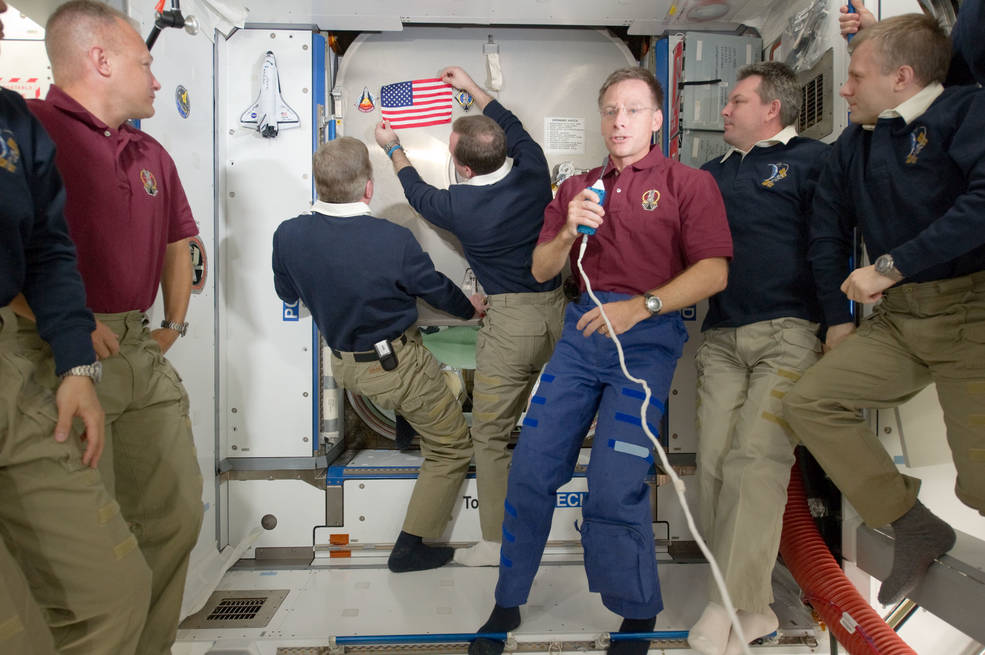
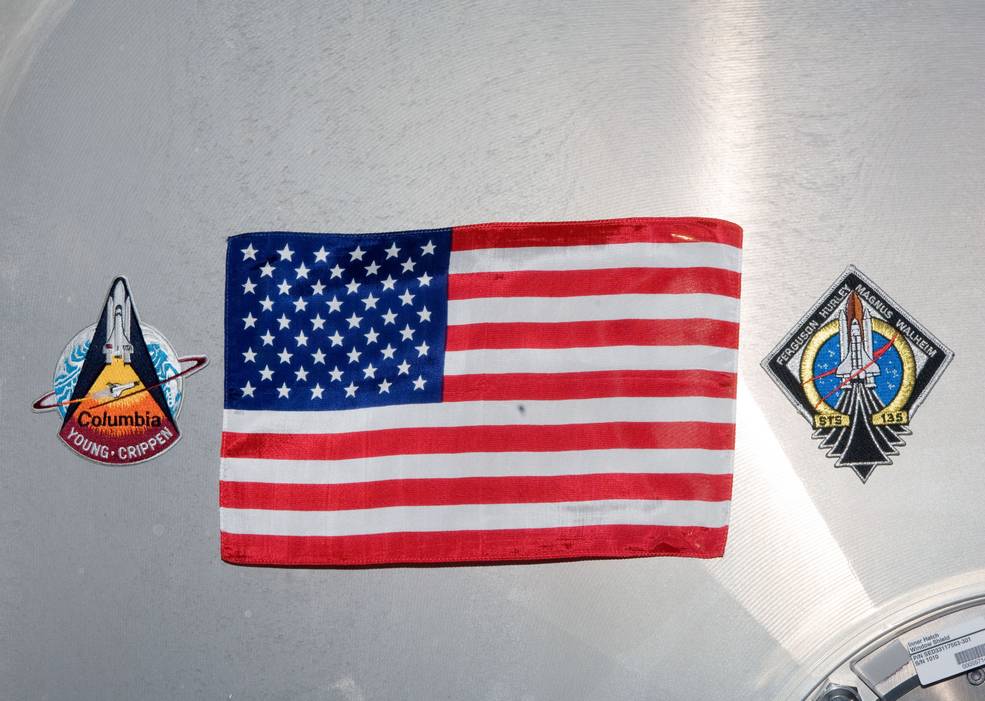
Left: The STS-135 and Expedition 28 crews place the U.S. flag first flown on STS-1 on the forward hatch of the Harmony module. Right: Closeup of the flag flown on STS-1, with the STS-1, left, and STS-135 crew patches.
Shortly before the shuttle crew left the space station, Ferguson presented the Expedition 28 crew with a U.S. flag flown on the first space shuttle mission, STS-1, in 1981. During the televised ceremony, the crews placed the flag on the hatch of the Harmony module through which the Atlantis crew departed, and through which the next crew to launch on an American spacecraft from American soil would arrive. And indeed, on May 31, 2020, the SpaceX Crew Dragon capsule Endeavour arrived at the space station, and its crew of Hurley and Robert L. Behnken floated through that same hatch, with the U.S. flag from STS-1 mounted on it.
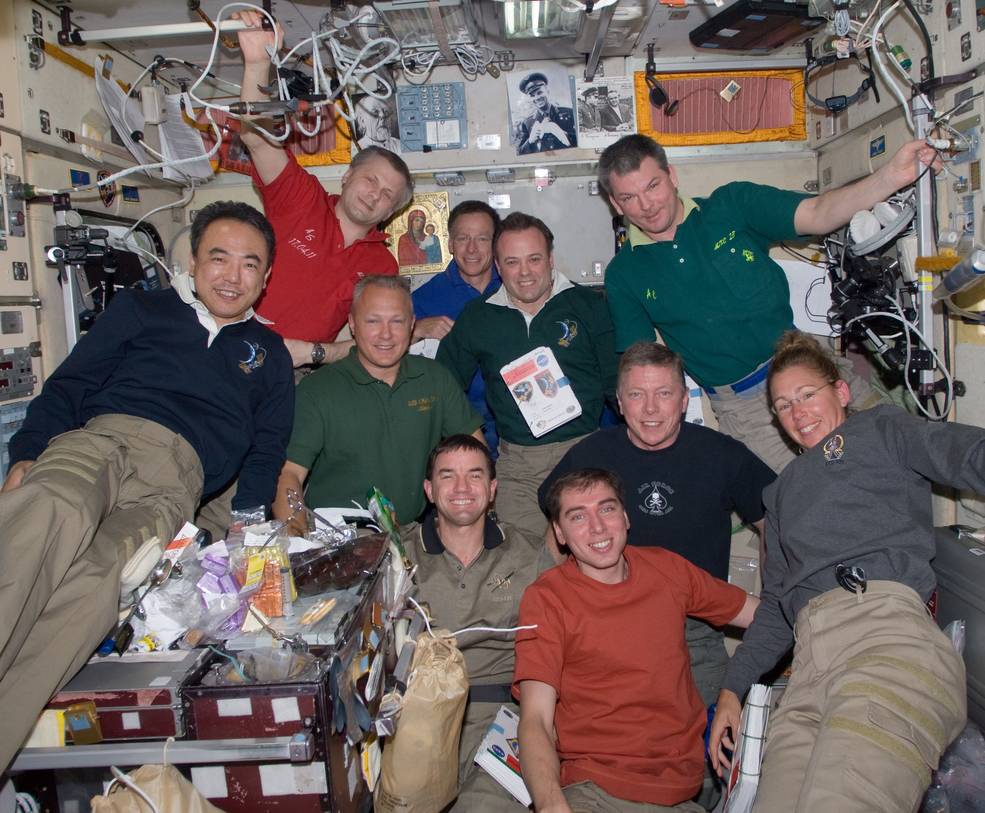
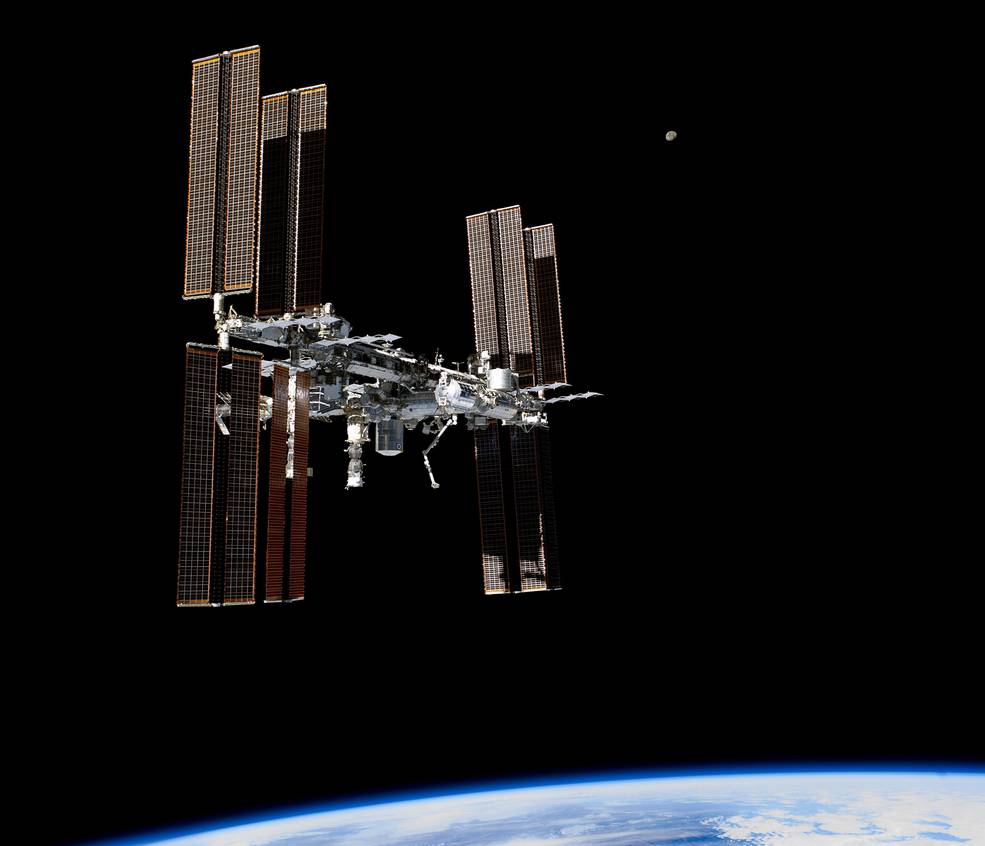
Left: The joint crews of the STS-135 and Expedition 28 enjoy a meal in the Zvezda Service Module. Right: View of the space station as Atlantis departs.
On July 19, with Hurley at the controls, the shuttle undocked from the station and performed an inspection fly-around. As Atlantis departed, Ferguson reflected on the view of the completed station, saying, “When a generation accomplishes a great thing, it’s got a right to stand back and for just a moment admire and take pride in its work.” He added, “As the ISS now enters the era of utilization, we’ll never forget the role the space shuttle played in its creation. Like a proud parent, we anticipate great things to follow from the men and women who build, operate, and live there. From this unique vantage point we can see a great thing has been accomplished. Farewell ISS. Make us proud.” On July 21, the shuttle fired its orbital maneuvering engines to drop out of orbit and begin the descent back to Earth. Ferguson brought Atlantis to a smooth night landing at KSC, ending the 12-day 18-hour 28-minute STS-135 mission and closing out the 30-year space shuttle program.
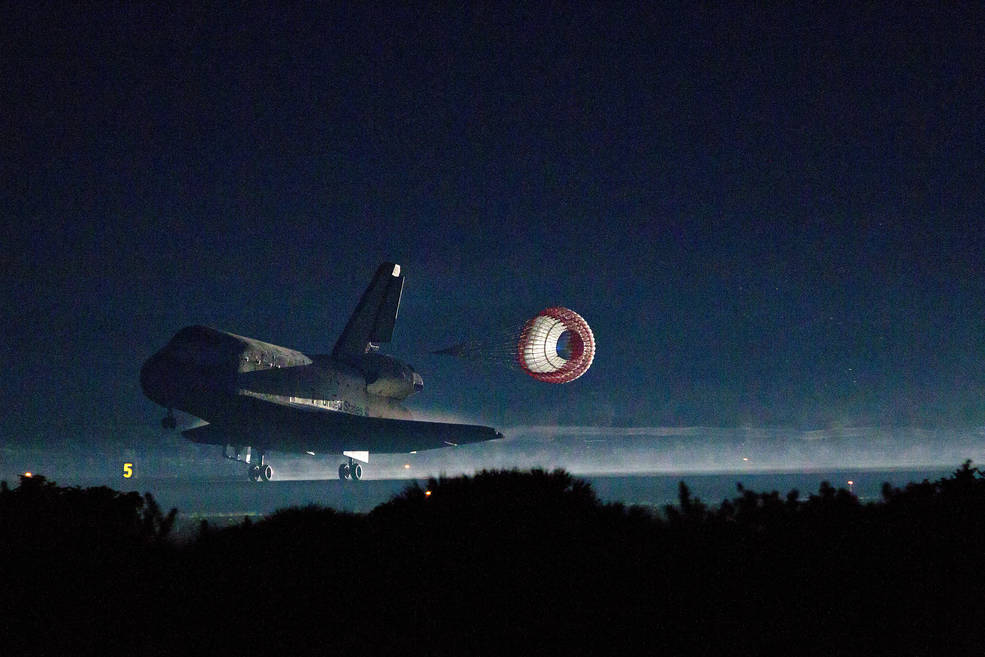
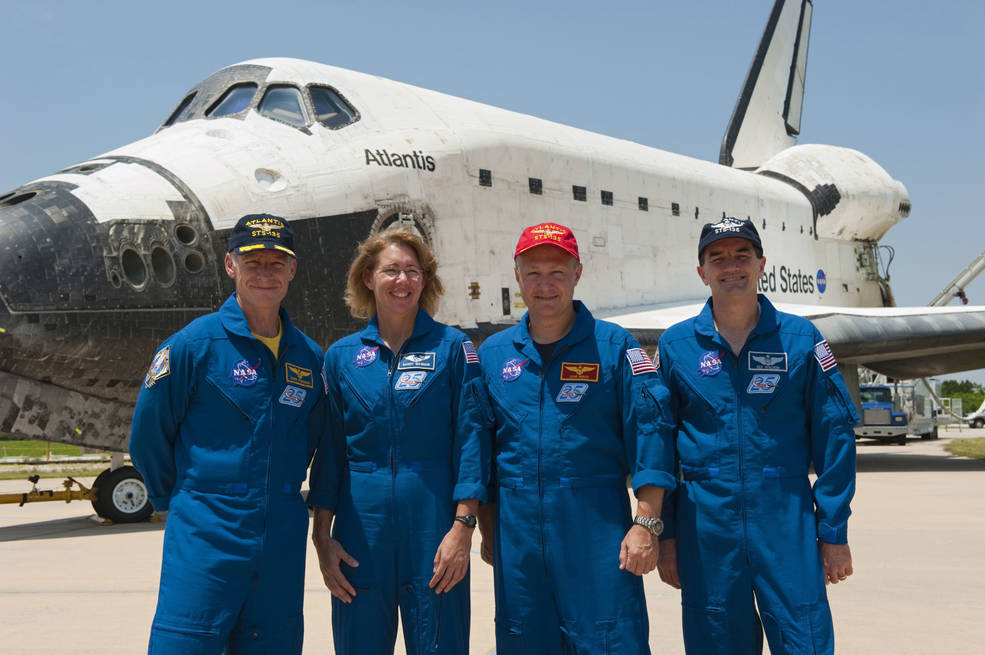
Left: Space shuttle Atlantis makes a night landing at NASA’s Kennedy Space Center in Florida to end the STS-135 mission and the space shuttle program. Right: STS-135 astronauts Christopher J. Ferguson, left, Sandra H. Magnus, Douglas G. Hurley, and Rex J. Walheim stand in front of Atlantis following their return from space.
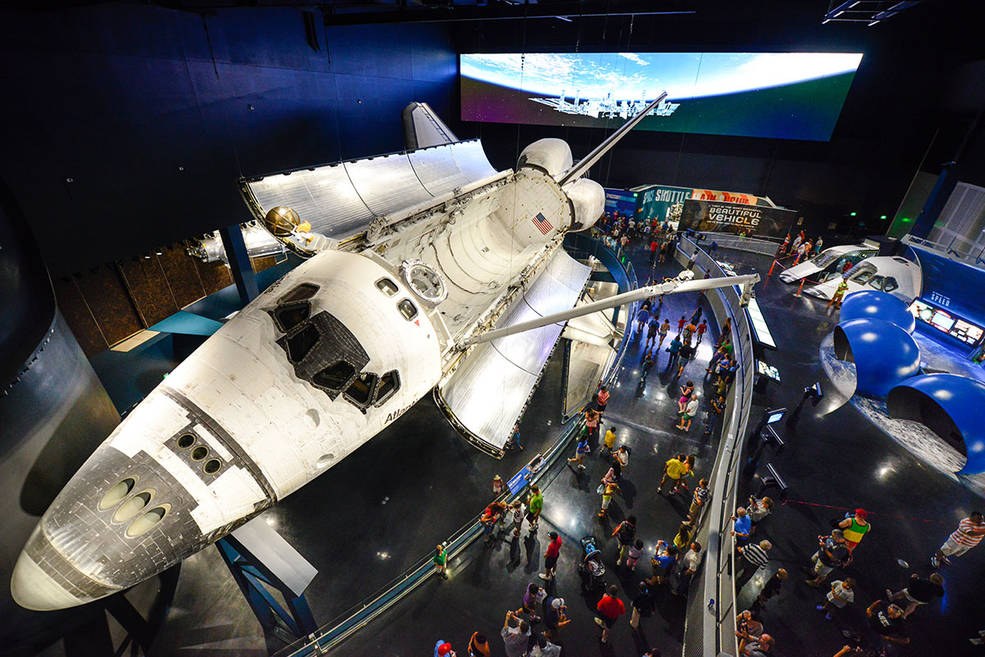
Space shuttle Atlantis on display at the KSC Visitor Center.





























